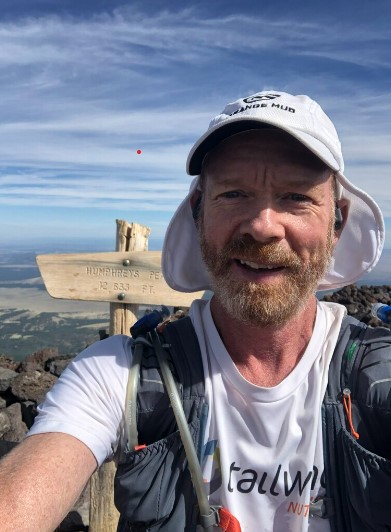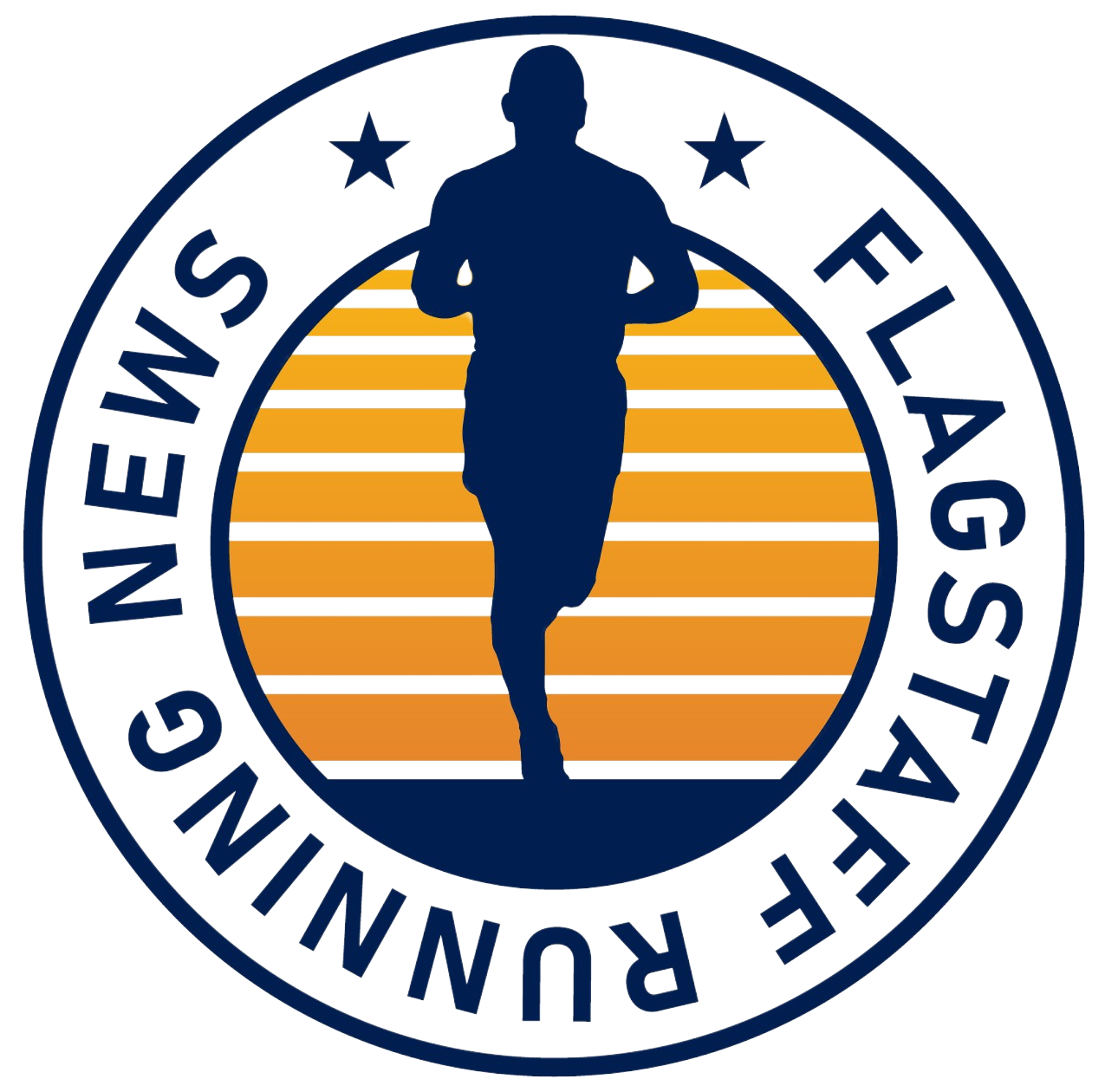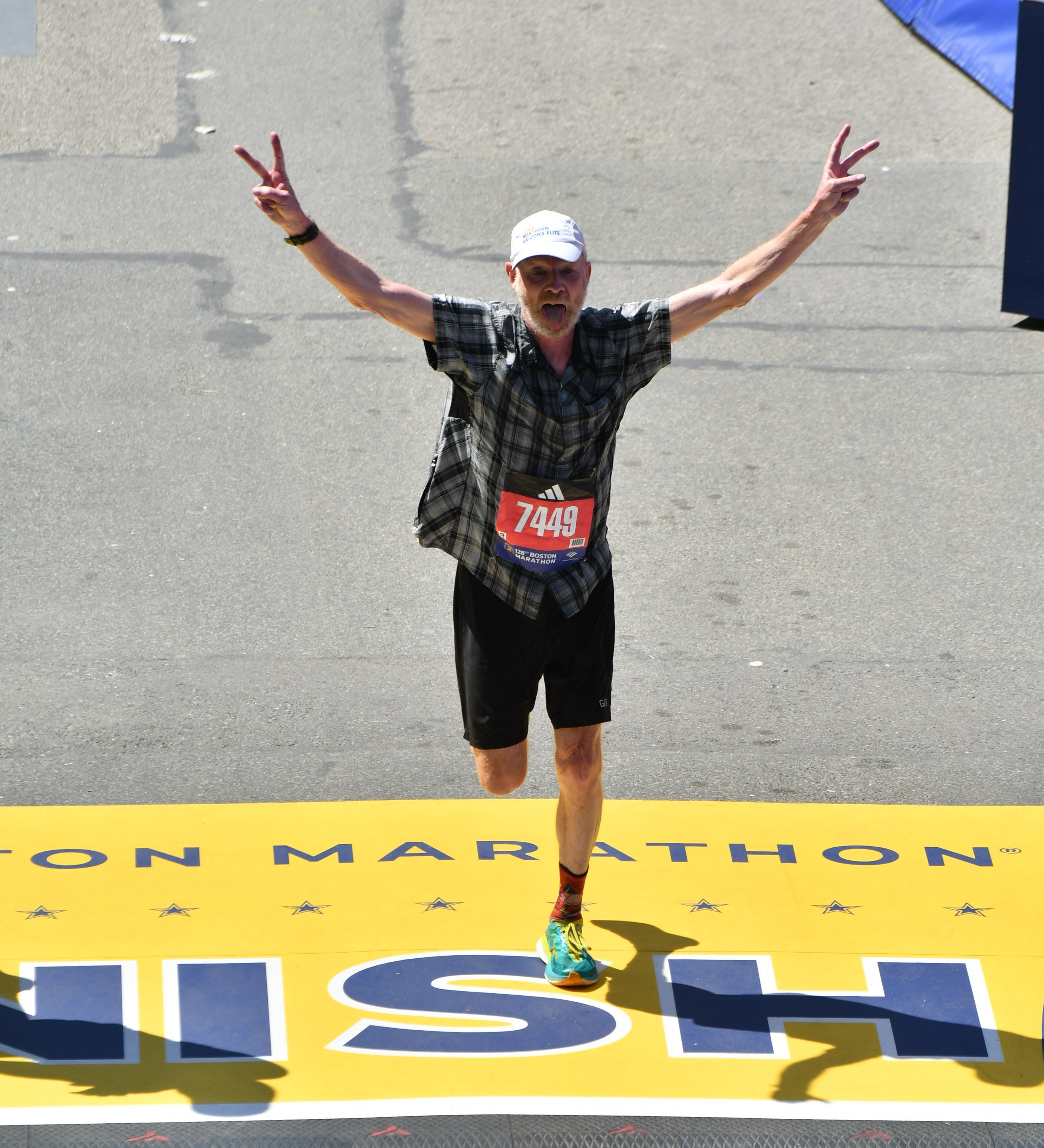They say the male brain does not fully form until age 25, the prefrontal lobe lagging in development. The male aerobic system, on the other hand, just might peak at age 25 — or maybe 30 – before beginning that slow, inexorable slide into middle age.
For a counterargument on that latter contention, we present the case of Flagstaffian Ted MacMahon, who has seemingly reversed the aging process judging by his Boston Marathon progression.
Ted in 1991, age 25: 2 hours 57 minutes 49 seconds.
Ted in 2024, age 58: 2 hours 56 minutes 41 seconds.
Monday’s performance from Hopkinton to Boylston Street was a milestone for MacMahon: his 25th Boston finish. Even more impressive: he beat the time of his younger self, back when he was still an aerobic monster from his days as an NCAA Division-1 cross-country ski racer at St. Lawrence University, and not a busy executive in the nonprofit fundraising sector (as well as being on the board of both Hoka NAZ Elite and Flagstaff Shelter Services).
How does he do it?
We phoned MacMahon, still in Massachusetts for a few more days, to talk longevity, training and cross-training, toggling between road marathons and ultra trail events, and his plans beyond Boston.
Flagstaff Running News: When did you first get serious about running? After college?
MacMahon: I always seemed to gravitate toward longer distances. I did a 100-mile Nordic ski race my senior year in high school. I sort of realized that I could get in a groove and go for quite a while. That always seemed to appeal to me. I never seemed super-fast, but I learned not to slow down.
I ski raced for two years after college, and when I came to the realization that my dream of making the Olympic team was going to fall short, I then got a real job and started running. My first Boston in 1991 was my first marathon. I was 25. My dad and my uncle ran Boston twice back in the 1960s, and I thought I should probably do it once and check that box off. I thought it would be one and done in 1991. But then I got the bug to try some more and never lost that itch.
FRN: When did you move to Flagstaff?
MacMahon: My wife and I moved to Flagstaff in 2017. We were looking to relocate to a mountain town, because that’s where we seemed to gravitate whenever we had time off. I thought we’d end up in Colorado and we hunted all over the West. We stumbled on Flagstaff. I was just then getting into ultra trail running and I attended Rob Krar’s ultra camp. That’s when I first met the running community in Flagstaff and felt like I came home. We came back for a long weekend so I could introduce Pamela, my wife, to all the people I met at that running camp, and then worked on getting remote jobs so we could have flexibility.
FRN: Let’s talk about training for this year: Do you have a coach? Do you do a lot of aerobic base, a lot of workouts? What’s the training like?
MacMahon: I do have an online coach for about a decade, Paul DeWitt (a two-time Leadville 100 winner). We only talk about once a year, but every couple of weeks I get a set of workouts. He’s a former ultra-trail elite, and that’s why I signed on with him. After some attempts at 100 miles that didn’t go so great, I figured I better get some advice. I used to run seven days a week. Now, I run four to five times a week. I’ve learned, as I get older, cross training is much more important. If I ran seven days a week, I’d be injured all the time.
FRN: On the four or five days you do run, I assume these days all have a purpose, not just steady-state work?
MacMahon: Yeah. My coach gives me five runs to do in a week. He ranks them by priority, so if life gets in the way, I gotta drop off number five, but I gotta do one through four always. The number one priority is the long run that I do on the weekends. That’s anywhere from 15 to 25 miles.
FRN: Is it roads when you’re training for Boston, or trails, or a combination?
MacMahon: I was about half and half leading up to Boston. In Flagstaff, even in the middle of winter, you don’t need to drive very far to be running on a forest road. I’d drop down to Beaver Creek or go out to Winona. But half my long runs were right on Lake Mary Road.
FRN: Did you do a lot of these long runs at marathon pace, at least partially?
MacMahon: Yes. Some I would mix in up to six miles in the middle at marathon pace and then the rest was just a comfortable steady state. Understanding that I was going to be racing at sea level, so on a lot of my runs – in fact, on almost all of them – I don’t look at my watch. I go by effort. That’s something I couldn’t do when I was 25 years old, because I didn’t have a feel for it yet. Now I know what I can hold for say, three hours. I know what that effort is, and it doesn’t matter what altitude I’m at, I just go by that effort and dial that in for race day.
FRN: Any speedwork in this last buildup to Boston?
MacMahon: I’m a member of Team Run Flagstaff, so I made some track workouts. I was also doing half-mile intervals on Lake Mary Road and some mile intervals. The shorter intervals would be on the track.
FRN: What do you do for cross training?
MacMahon: I cross-country ski. I bike, typically some mountain biking. My wife for my birthday in January gave me a Rucksack. This is a burly backpack with a 20-pound weight in it. You walk a few miles in that, and it’s a combination between cross-training and strength training. I’ve found the older I get, the more important strength training is.
FRN: Thinking back to your younger self in late 20s, early 30s, do you believe, knowing how you train now, that you could’ve run faster then?
MacMahon: Probably, yeah. Just this morning, I was looking a spreadsheet with my 25 Boston finishes, and this year was my fifth fastest. I look back at my 20s, and I was running some under sub-2:50. I just know I didn’t know what I was doing. I didn’t have a coach. I didn’t know much about fueling, and I was just winging it for training. I don’t think I could’ve been anywhere near an elite runner potential, but with the knowledge I know now ….
I quite often will get a message from a high school or college friend, saying, ‘My daughter or son is about to run their first marathon, would you have time to talk to them?’ I enjoy that. I tell them, ‘Look, I don’t have all the answers, but I’ve made all the mistakes. Let me help you try not to make the mistakes I made.’ A couple days ago (at Boston), I knew exactly what to fuel with and knew the exact effort I thought I could hold for 26.2 miles. That’s a fine edge when you’re trying to reach a goal, whatever that may be. I couldn’t get a feel for that edge back when I was 25. That certainly helps a lot now.
FRN: The future? Do you want to do more ultras, keep doing Boston until you’re maybe 80 or 90, or what?
MacMahon: I want to run for as long as I can. I’m ready to take a break from Boston. I don’t have any goals (now) for Boston. I do see doing it again at some point, if I got motivated to. In the future, I’d love to see how well I’d do in my age group, or if one of my children wanted to run it. There are other races I’d like to do. I’ve got a 100-mile race in San Diego in five weeks, and then I’m going to be running TransRockies (six-day run) for the first time this summer. I won my age group at Imogene (Pass, 17.1 miles) last year, so I might go back there. I haven’t mapped out the fall.
FRN: Finally, speaking of goals, was it during Covid when you did the Fastest Known Time from downtown Flagstaff to Humphreys Peak and back? What was the inspiration for that?
MacMahon: Well, I had been training for a 100-mile race that got canceled (due to Covid). So, I did my first Rim to Rim to Rim (of the Grand Canyon) and then I did what I called H to H to H – from Heritage Square to Humphreys to Heritage Square. I set an FKT, I didn’t beat one, since no one had done it before. I was hoping someone else would try it, but unfortunately Weatherford (Trail) got washed out (post-Pipeline Fire). Hopefully, that’ll get rebuilt, and then someone can go crush my record.



Leave a Reply